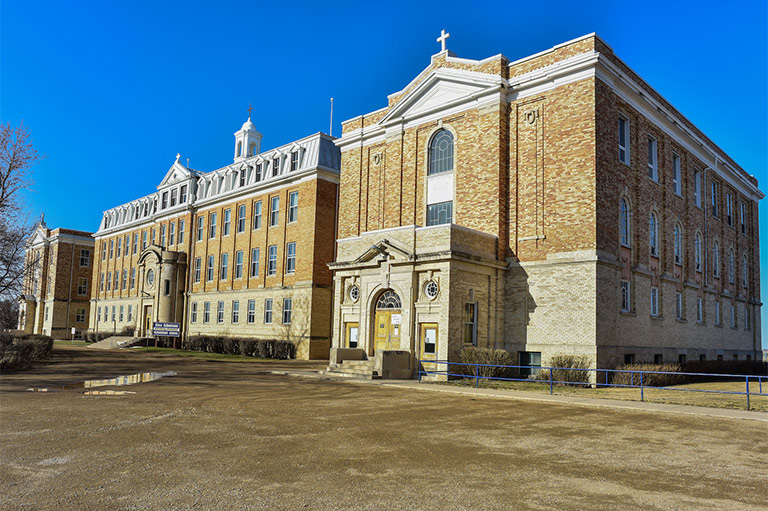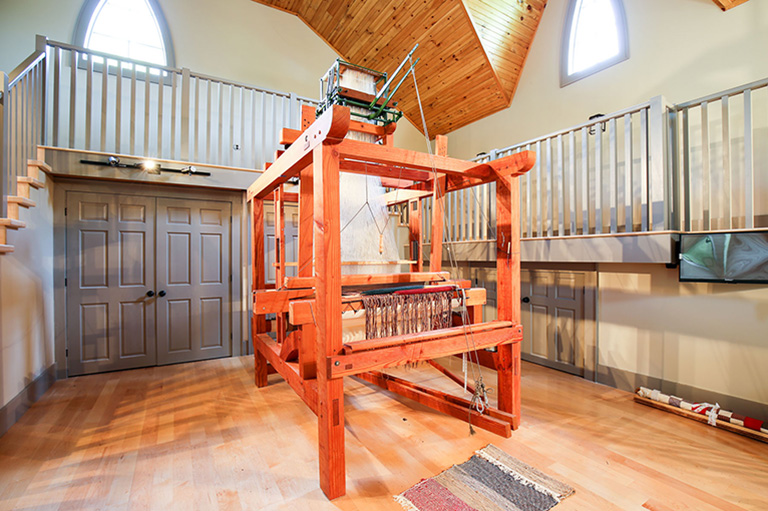Gravelbourg Convent

Location
Gravelbourg, Saskatchewan
Why it matters
The Convent of Jesus and Mary (also known as the Gravelbourg Elementary School), in the small southwestern Saskatchewan town of Gravelbourg (pop. 1,000), operated as an education facility from 1918–2015 and a community space from 2016–2023. In 1995, it was recognized as part of the Gravelbourg Ecclesiastical Buildings National Historic Site of Canada, a designation that also includes the Cathedral and Bishop’s Residence.
Constructed between 1917 and 1927, the heritage value of the large (90,000 sq ft), 4-storey structure lies in both its architectural excellence and its historical associations. Designed by the distinguished French-Canadian architect J.E. (Joseph) Fortin, the building exemplifies Classical Revival design (with French-Canadian and Baroque influences) in its monumental proportions and is crafted from regionally sourced Claybank brick and Tyndall Stone. The convent is an important historical marker of French settlement in western Canada. Over the years, it operated as a non-denominational public school, girls’ boarding school, and convent, while also serving as a hub of learning and religious instruction for the surrounding region.
With 7 uniquely curated newsletters to choose from, we have something for everyone.
Why it’s endangered
When the Gravelbourg Elementary School, which took over operation of the facility in 1971, moved to a new building in 2016, the Town of Gravelbourg agreed to become the owner of the building while working to turn it into an assisted living complex. Despite the substantial efforts of municipal staff and community volunteers, the project eventually faltered due to funding roadblocks and the disruption of the COVID pandemic. From 2016-2023, the former first floor of the convent was well utilized as a community space and rented out to artists, non-profit organizations, and small businesses. In 2023, the Town evicted the tenants and closed the convent to the public due to high heating and maintenance costs.
In December 2022 the convent suffered significant vandalism with light fixtures, doors, and religious statuary destroyed. Despite the Town’s efforts to secure the building, it remains vulnerable to break-ins due to its age and vast size. The convent has been vacant and without heat or water/sewer since April 2023, and there is growing evidence of deterioration — crumbling plaster, buckled flooring, cracks in the walls — and water damage. There is still community support for saving this impressive landmark, and there is belief it would make an exceptional assisted/retirement living facility, rental accommodation, artistic retreat, hospitality accommodations, or other mixed-use space. In January 2023, the Town released a call for Expressions of Interest for the adaptive re-use of the convent, but unfortunately no proposals were submitted.
Advertisement
Canada's Top 10 Endangered Places List 2024
Advertisement
Themes associated with this article
Advertisement











